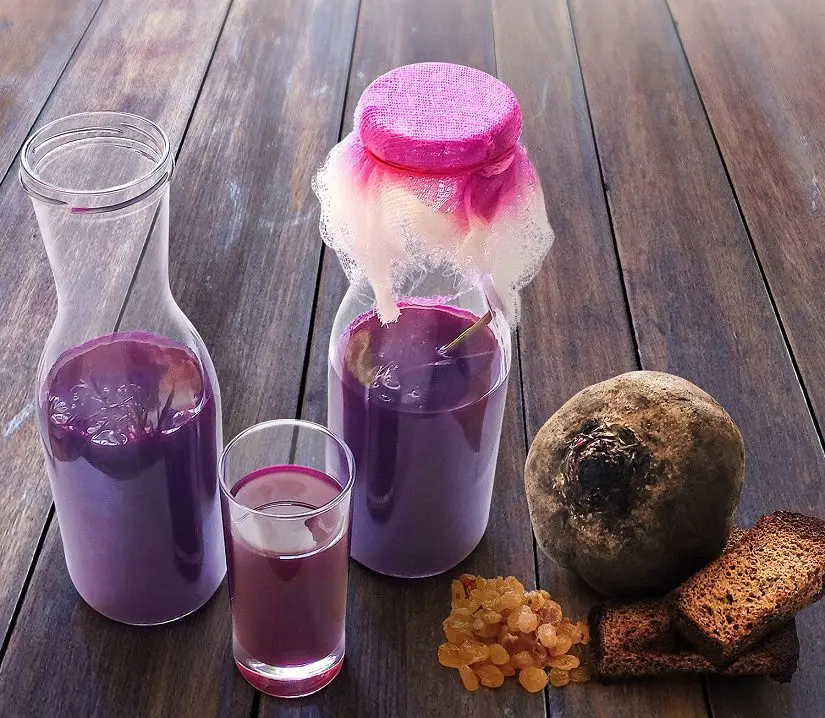Home-made beet kvass is remembered for its rich vegetable taste with hints of dill and slight sourness. Fortress – 3-4% vol. The drink can be made both carbonated (it will be a little sharper) and not carbonated – the taste will be softer. Such kvass is not only refreshing, but in moderation helps with a hangover.
beet kvass recipe
Ingredients:
- red beets – 0,5 kg;
- sugar – 11 tablespoons;
- water – 2 liters;
- raisins – 30 grams;
- black bread crackers – 2 pieces;
- fresh dill – 4 sprigs.
The beets must be free of rot and mold, this is very important so as not to infect the wort with pathogenic microorganisms. Raisins serve as a source of wild wine yeast (so as not to add baker’s or spirits), so they should have a pleasant aroma and not contain mold. It is advisable to buy raisins in the market, where they are less processed with chemicals and the yeast is better preserved.
If possible, a few days before the preparation of beet kvass, I advise you to make raisin sourdough and add it to the wort already. This way you can check the raisins for any wild yeast left on them.
Croutons bring a light bready note to kvass, and fresh dill enriches the aroma and taste with characteristic tones.
The technology of making kvass from beets
1. Wash and peel the beets. Cut the pulp into medium pieces.
2. Add water and sugar to the fermentation jar, stir until all sugar is dissolved.
3. Add raisins (or sourdough), black bread croutons and beets to the resulting sugar syrup. The bank should have 15-20% free space for foam.
4. Cover the container with gauze. Leave for 5-7 days at room temperature and natural light until kvass ferments. After a day, signs of fermentation should appear: foam, hiss and a slight sour smell. Fermented kvass loses its foam and ceases to release gas.
Attention! During fermentation, beet kvass emits not the most pleasant smell, this does not affect the taste and aroma of the finished drink, you just need to know about this feature and it is advisable to keep the kvass fermenting near the window or ventilation, and even better – in a room where people do not live .
5. In bottles or jars for storing kvass, add 1,5 tablespoons of sugar per 1 liter of volume.
6. Strain kvass through several layers of gauze and pour into bottles (jars) for storage, without adding 3-4 cm to the neck. Put 2 sprigs of dill (do not cut).
To make beet kvass carbonated, close the bottles with corks or caps, then shake to dissolve the sugar. If gas is not required in the drink, then it is enough to mix the sugar with a spoon and cover the neck with gauze.
The remaining sourdough can be used to make beet kvass 2-3 more times, adding only a new portion of water and sugar.
7. Leave the bottles for 2-3 hours at room temperature. Then transfer to the refrigerator or cellar for 3 days. Kvass under gauze will be softer in taste, its shelf life is 3-4 days. Carbonated beet kvass is sharper in taste and can be stored in a cool, dark place for up to 14 days. Fortress in both cases – 3-4% vol. Serve chilled!

Learn more about how to make beetroot kvass in the video.









